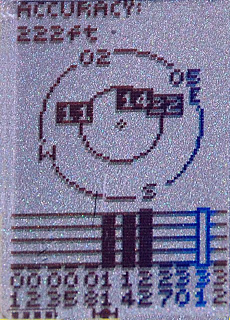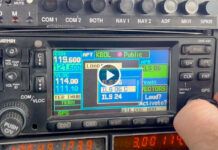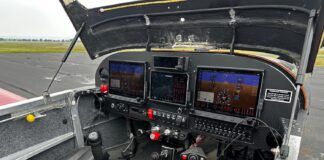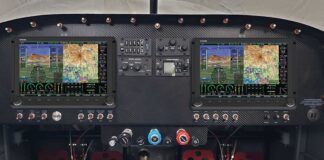 Your hand-held GPS works great and gets you where you want to go. Why would you want to take up precious panel space with a version that costs three to five times as much? Those panel-mount versions are just bigger, heavier computers, so shouldn’t they be cheaper?
Your hand-held GPS works great and gets you where you want to go. Why would you want to take up precious panel space with a version that costs three to five times as much? Those panel-mount versions are just bigger, heavier computers, so shouldn’t they be cheaper?
Understanding starts when you turn on your GPS and get a cute little map of GPS satellite positions; Is that important? Does it matter where the satellite is positioned? You need only three, right?
The answers are yes, yes, and sort of. For now…
We sat in on a “Wings” seminar recently where the subject was WAAS; what is it, why is it, why you should know, what does the future hold, and why should you, the day VFR, don’t-go-more-than-an-hour-or-two-from-home pilot care.
The speaker, Larry Oliver from FAA Flight Standards was very clear on a couple of things: one, VOR stations are expensive to build and maintain hence they’re not being repaired as they fail; two, GPS is here to stay but portable units will never be certified for IFR use.
It’s that last one that caused some mutterings of “Well, why aren’t they?” from the audience.
The answer lies in three factors: antenna position, satellite position, and clock accuracy.
First there’s the unpredictability of antenna position; On your lap, tied to the yoke, or mounted to the side of the window frame all look nice and work fine for day-VFR, but the antenna is the key; without it having a clear shot at the sky there’s no way to ensure that it’s receiving as many sat signals as possible.
When your vanilla GPS sees three satellites it can give you a position fix within about 100 meters. And that’s good enough to get you to that two-hundred dollar hamburger (that’s the price of AvGas for you). But to get the accuracy needed for night flight to a cloudy airport you need better than that.
Second, if the satellites are grouped together it’s not going to be a high resolution picture. And if they’re low on the horizon the signal degrades in the slant-distance through the atmosphere.
And third there’s the clock factor; Contrary to popular opinion, the clocks on the satellites are not those hyper-accurate atomic models that keep time to one second in a gazillion years. Your portable GPS takes the signal from several satellites and averages the answers to give you a position. But because it’s an answer with a relatively fuzzy key factor in the calculation, you get a relatively fuzzy position of somewhere in a 100 meter circle.
The WAAS system, however, uses those satellite signals and compares it to ground based super-clocks. Mind, this is so precise that even at the speed of light, the distance to the satellite is a factor. Indeed, without Einstein’s Theory of Special Relativity factored in, the system wouldn’t work.
The WAAS system takes those satellite signals in on a net of ground stations, corrects them, and broadcasts to a pair of geo-synchronous satellites over North America, which then sends them to the WAAS-enabled receiver on the panel of your airplane.
The result is that where your vanilla GPS is accurate to 100 meters, a WAAS-capable GPS refines your position to within 7 meters.
Additionally, the more expensive WAAS certified GPS on your panel is heavier because it has the circuitry to receive that signal and check it for errors. If something is amiss it will then inform you within six seconds that all is not right and you can pull up for a go-around or whatever you need to do, but you know better than to continue thinking that you’ve got good information.
This will allow airliners to use parallel runways in poor weather; shorter transcontinental routes with closer spacing; and shorter approaches to landing. And all of this is done without airport-based hardware thereby enlarging the number of IFR-capable airports. With this in mind it makes sense to spend money on new WAAS stations instead of maintenance on VOR and Loran stations.
So, keep those VORs for a few more years, but it won’t be long until they’re sitting on the shelf with the sextant. But should you buy that big-bucks panel-mount GPS for your baby? Only if IFR is in your future.
If you’d like to know more, visit the FAA web site.













